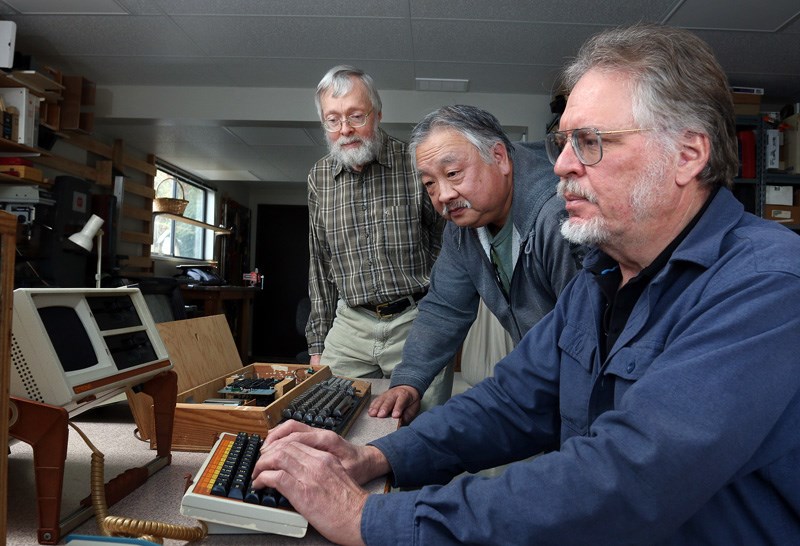When David Querbach got an Otrona Attaché portable computer, he knew he was holding the future in his hands.
It had a 5.5-inch CRT monitor that could display text and graphics, dual floppy drives and a whopping 64K of memory. But most importantly, it could be carried anywhere — even if it did weigh 18 lb.
Saturday, Querbach and a few dozen other members of the former West Coast Computer Society are holding a reunion in Coquitlam.
The club, the first of its kind in the Lower Mainland, started in September 1976 with about 19 enthusiasts gathered in a basement suite in Burnaby. As membership grew to a peak of about 200, the meetings moved to BCIT, where everyone showed off their latest projects, swapped tips about programming and shared ideas to push the technology.
Querbach said it was all very exciting.
“Computers were something big that was owned by a big company, and we could own one,” he said.
But unless you had $4,000 or so burning a hole in your wallet — which is what the Otrona Attaché cost — you probably also had to build it and program it yourself.
Querbach said several of the club’s members were initially attracted to computers because they were already ham radio hobbyists, so they had a working familiarity and fascination with electronics. “Now we could do computers,” he said.
Back then, “doing” computers meant spending hours at a workbench soldering chips to a circuit board, then stringing hundreds of fine wires by hand to connect them all together, just so something like a series of lights could blink in a specified pattern.
But those lights were a beacon to the future, Querbach said.
“We knew it was going to be big,” he said. “This was going to change the world, we just didn’t know how.”
Dave Wiens was amongst the club’s earliest members. He said being in on the ground floor of the digital revolution felt like being present at the birth of an infant.
“You don’t know how it’s going to turn out," he said, "but it has potential.”
He said as home computers became more accessible and user groups for machines from specific brands like Apple and Commodore started forming, interest in soldering circuit boards and studying schematics started to whither. The club disbanded in October 1990.
Both Querbach and Wiens used their passion for tinkering with computers to launch careers in programming, designing systems to be integrated into other technology like appliances, and even teaching.
And while the machines they built back then had about 1/1,000th the speed and 1/1 millionth the memory an average smart phone has today, they still miss the simplicity and joy of discovery of those early digital days.
“We were more under the hood,” Wiens said. “We wanted to understand how it was working.”
Said Querbach: “We were young and didn’t have any money."



